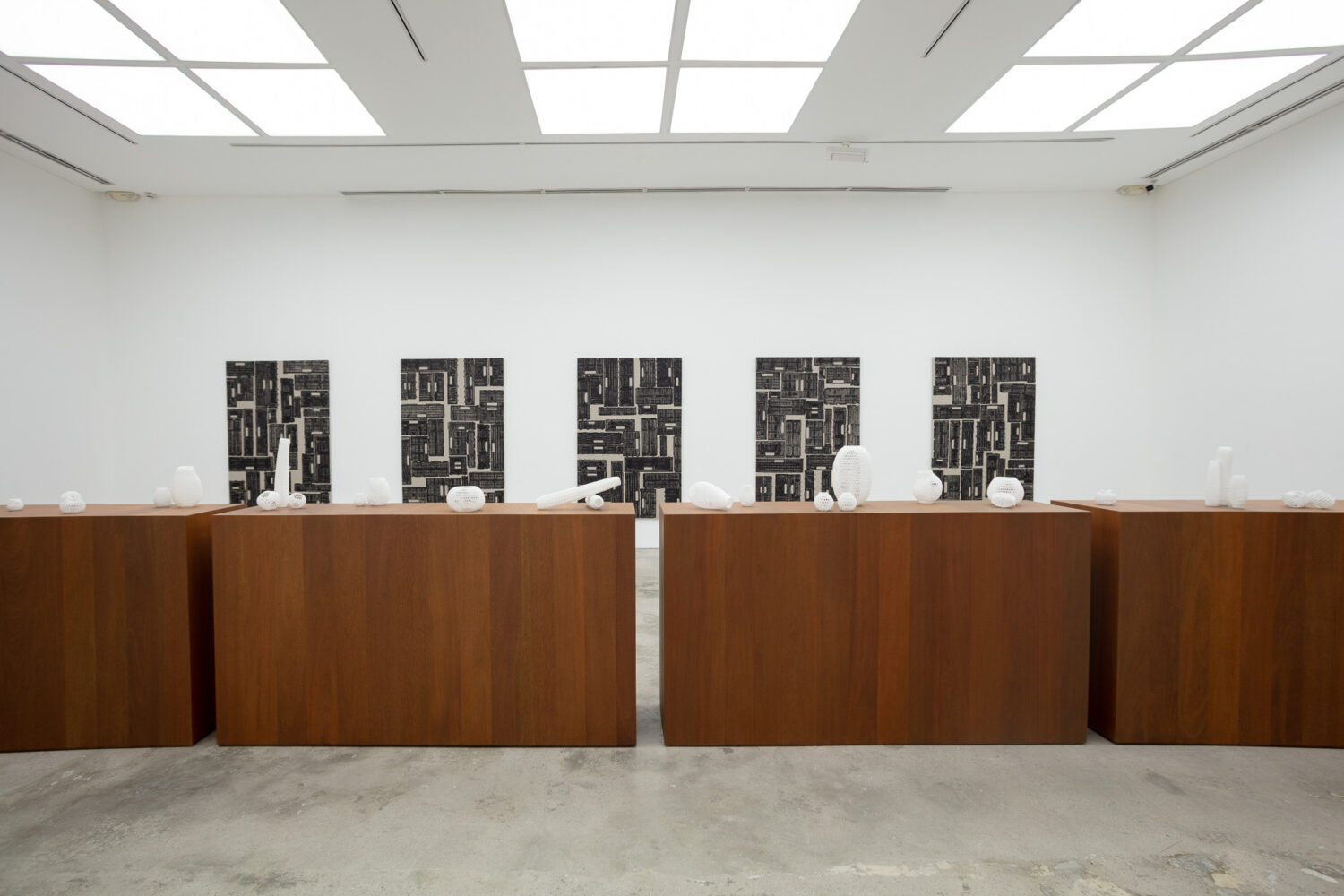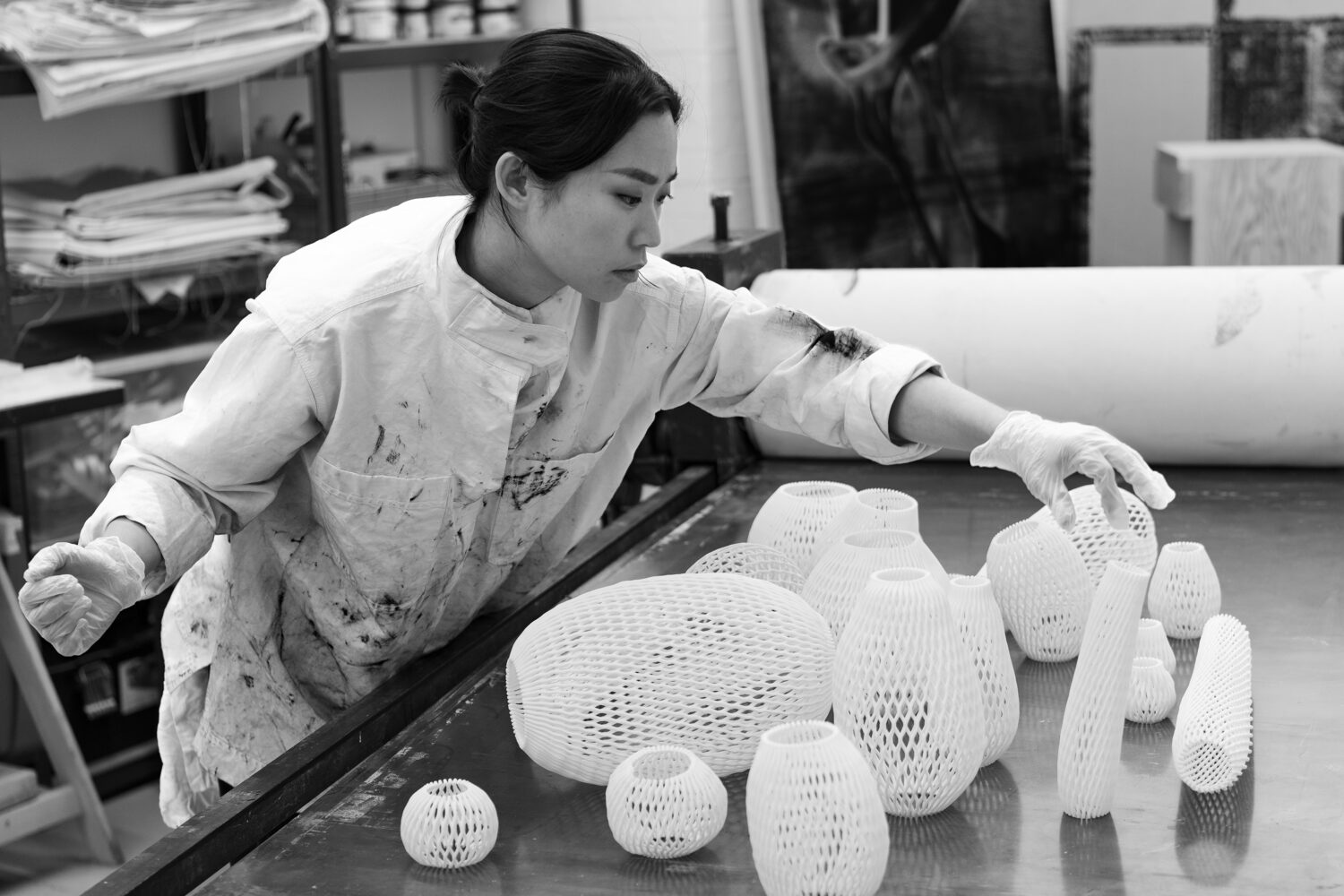The Art of Absence: Inside Nicole Coson’s ‘Membranes’ at Silverlens, Manila
By Keshav AnandIt’s humid and although the sun has now dipped beneath the Manila skyline, the heat still lingers. Outside Silverlens Gallery in Makati, several groups have convened. From various food stalls, the fêted Toyo Eatery is serving up pork buns, citrusy salads, ice creams flavoured with rice wine and avocado, and litres of delicious fresh coconut water. It’s a balmy evening, and as more gallery visitors arrive, a mounting sense of anticipation permeates the warm air.
Nicole Coson has drawn quite a crowd – a surprise to no one. Manila’s art scene is out in full force, mostly dressed in designs by Carl Jan Cruz, alongside collectors, curators, and friends from further afield, including Hong Kong, New York and London. There’s a buzz of reunion and recognition. As I make my way upstairs to the gallery space, and air-conditioning, the volume of chatter quietens a little.

My eyes are immediately drawn to four elegant wooden platforms that cut lengthwise across the room. These are plinths, though they feel less like supports and more like grounded elements in their own right, rooted and deliberate. Sitting atop them are Coson’s latest foray into the three-dimensional, Vanitas: delicate-looking forms shaped after the foam net sleeves used to cradle tropical fruits in transit, specifically papaya, Philippine persimmon, macopa, soursop, dragon fruit, jackfruit, and pineapple.
“Vanitas still life paintings represent transience,” Coson explains, “usually displaying a human skull amongst rotting exotic luxuries reaped from overseas trading and colonial ventures. Like the hollow craniums, the fruit meshes are empty vessels that once contained life, flesh, organic material with brief life spans. I wanted to invite similar contemplation of the futility of life with the fruit mesh, and how these casings long outlive the fruits themselves whose skin they were designed to protect – like the effect of their travel on the culture, biodiversity and the environment.”
This idea of absence speaking louder than presence is an integral thread running through Membranes, the artist’s third solo exhibition at Silverlens, tethering two distinct bodies of work. “In Membranes, I wish to highlight the trajectory of these perpetual things in motion through their absence,” she says, suggesting that what is no longer there – the fruit, the cargo, the body – might in fact carry the heaviest weight.

Coson’s practice is anchored in printmaking – and her approach to it is as much investigative as it is artistic. “I’ve always had an impulse to document things that I’m particularly fixated on,” she shares. “I think of imprints as a type of documentation. Whether it’s evidence of the mortal body of Jesus Christ in the Shroud of Turin or Japanese fishermen capturing proof of their largest catches in gyotaku fish rubbings – it’s a way to record the existence of something alive, fleeting or ephemeral. It’s more than just a photo. It’s like the residue of an event. It’s proof of a moment of direct contact or stillness of an instance that has since passed.”
In Membranes, this forensic impulse is most apparent in her ongoing Circuits series, where she presses found plastic shipping crates, sourced from eBay and the streets of east London, into ink and transfers their forms onto linen. The result is striking. Examined up-close they feel almost corporeal but viewed at a distance, they resemble aerial perspectives of cities or circuit boards, the negative spaces between each mark suggesting roads and narrow alleys.
These crates, like the fruit meshes, are selected not simply for their form but for what they signify. “They are carriers,” Coson notes, “objects without a specific origin or destination, just forever in flux.” The prints become quiet meditations on labour, movement, and the global systems of trade that underpin daily life. “These crates or fruit packaging are symbols of a world that is built by and extremely reliant on systems of exchange and networks of the global trade of goods…

Through obsessive repetition and sometimes through the large scale of the crate works or the super formal plinth presentation of the fruit mesh works, I feel like I insist on the presence and relevance of these objects normally discarded or disregarded,” Coson continues. “By reframing what is familiar, we are able to see it again as if upon first glance, allowing the subjects to oscillate in and out of recognition. I hope to encourage the viewer to take a pause, a prolonged gaze at the glimpses of our everyday lives, to contemplate the layers of history and meaning embedded within things.”
Coson’s fruit meshes, sculpted from digital scans and 3D-printed in polyamide, mimic their foam originals with uncanny precision. But their materiality belies their apparent lightness. Having handled prototypes in the artist’s London studio nearly a year back, I can tell you, they’re surprisingly solid and inflexible. Elaborating on her decision to present them on long, low plinths made of yakal, a native Philippine hardwood, Coson adds: “Since the fruit sculptures had this feeling of fleetingness and transience to them, I chose this type of wood to ground or root the works in place as if to weigh them down.”
What results is a tension between weight and air, between the absent and the physical. Just as the foam sleeves recall the fruits they once held, so too do the crate prints feel like remnants of something passed, an imprint of exchange, of industry, of someone else’s labour. “I feel like by doing this to inert or inanimate objects, I instil them with life,” Coson reflects. There is nothing performative or didactic here, only an invitation to look more slowly, more carefully. Membranes doesn’t just present objects, it animates them. It suggests that history is made not only in monuments but in the detritus of everyday life.
Membranes by Nicole Coson is on view until 25 April 2025 at Silverlens, Manila.
Feature image: Nicole Coson, Vanitas, 2025. Courtesy of the artist and Silverlens (Manila/New York)